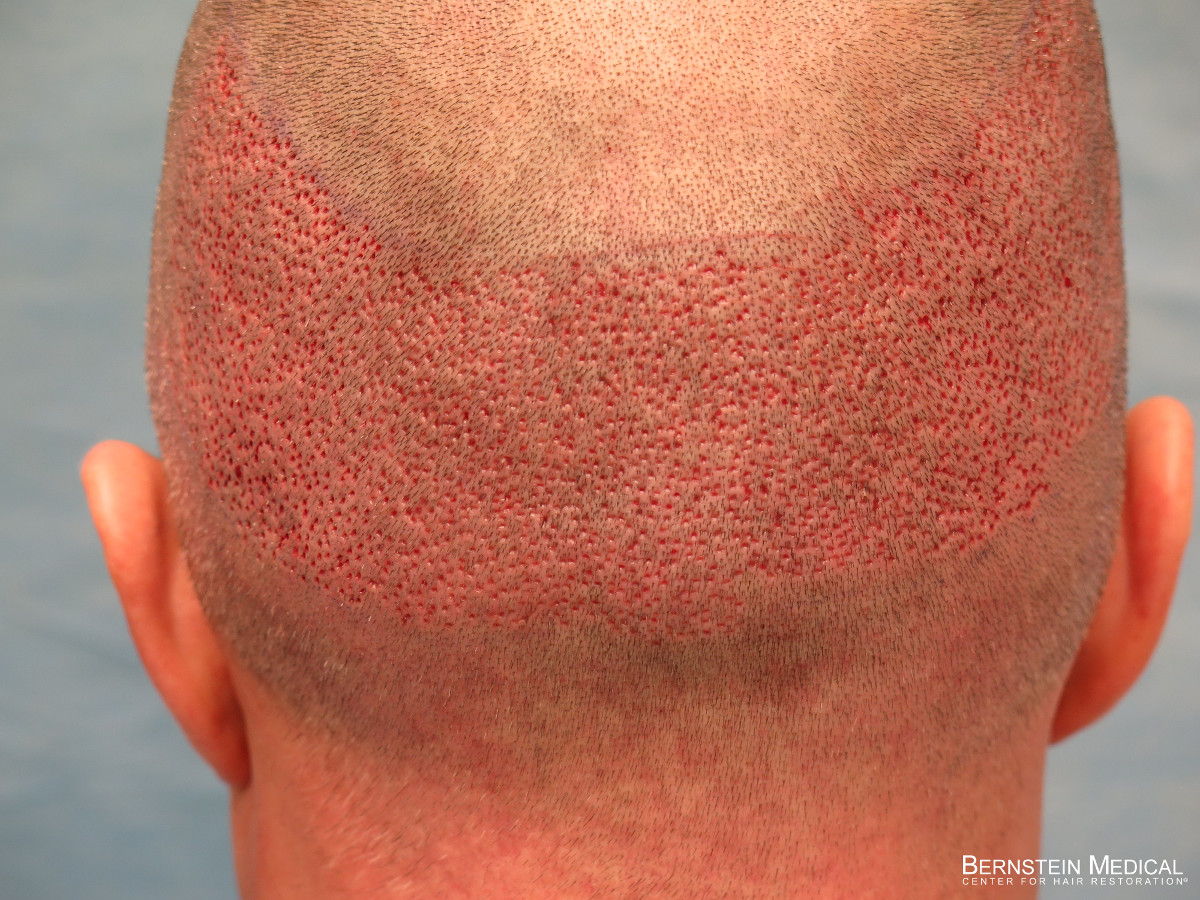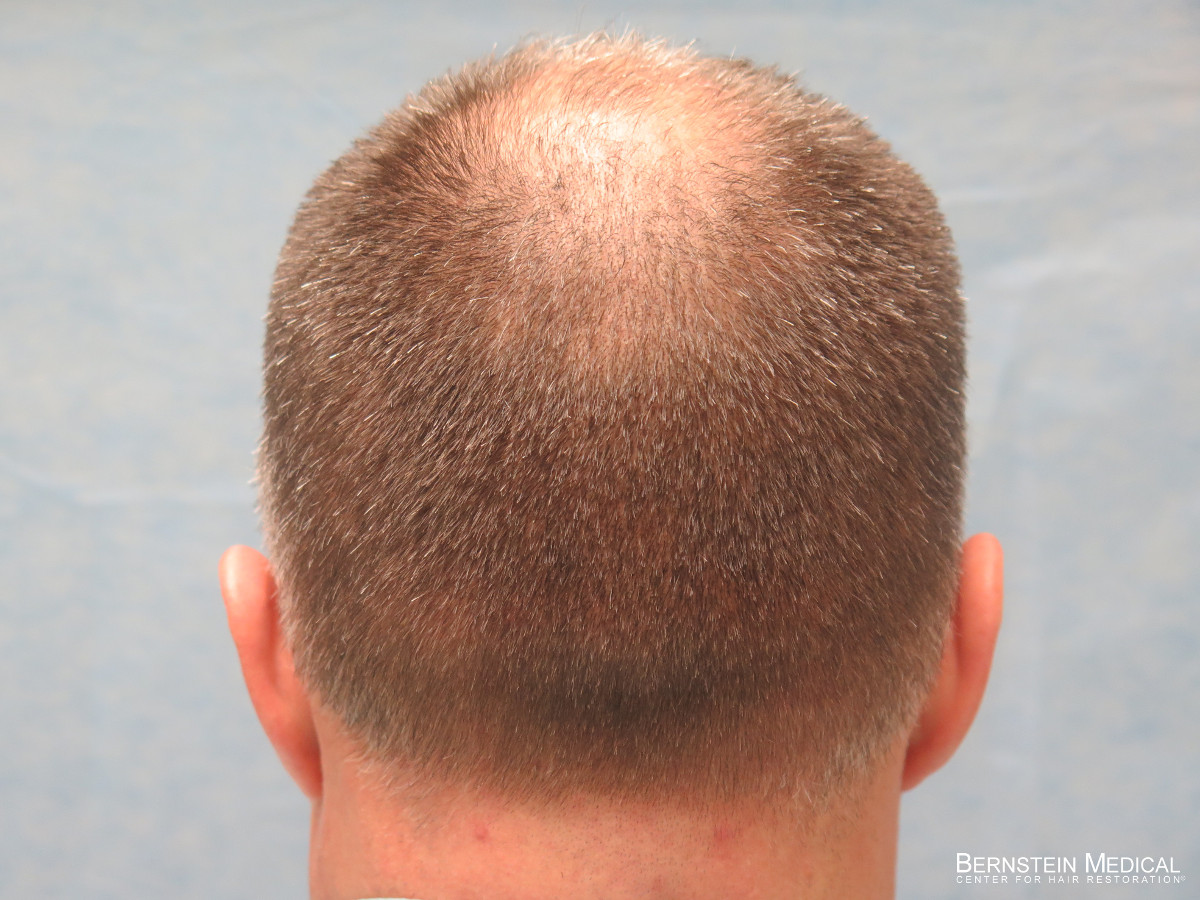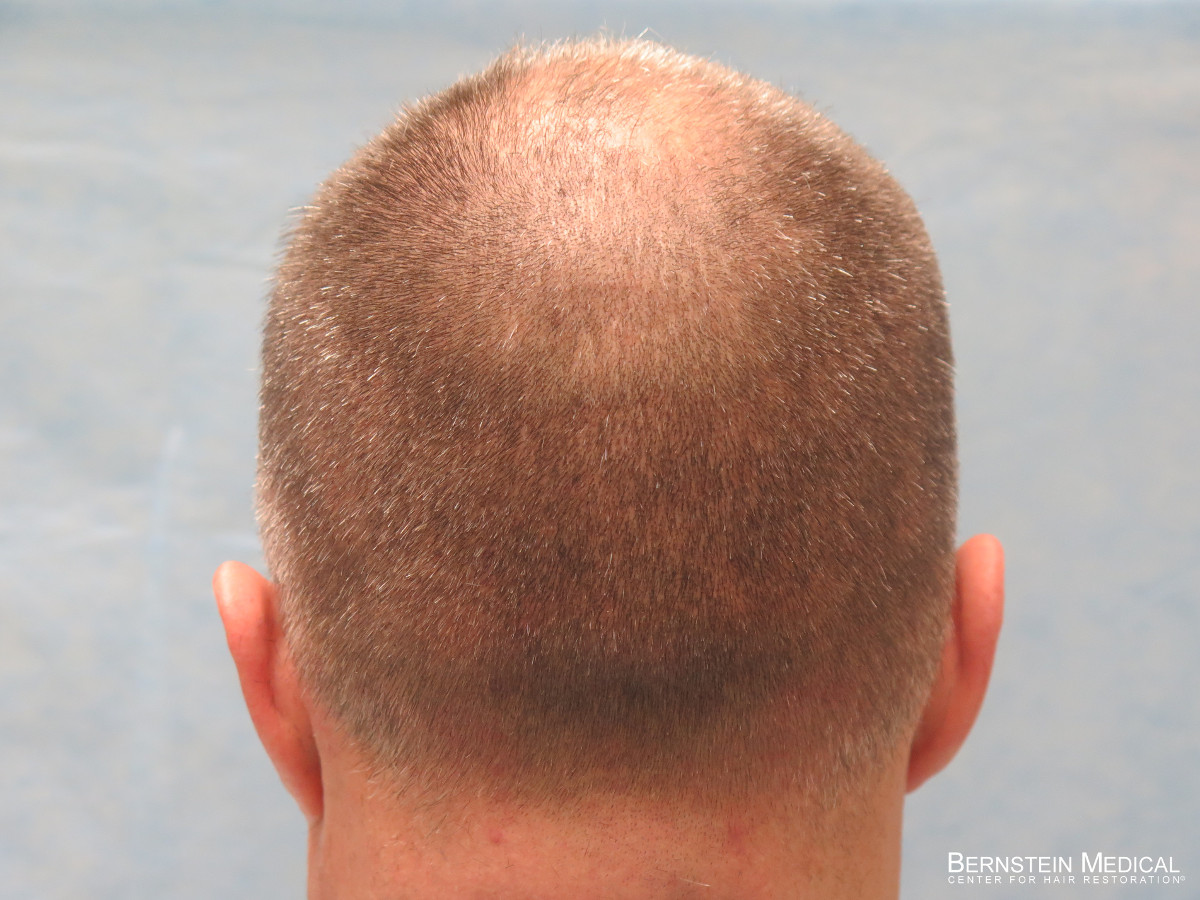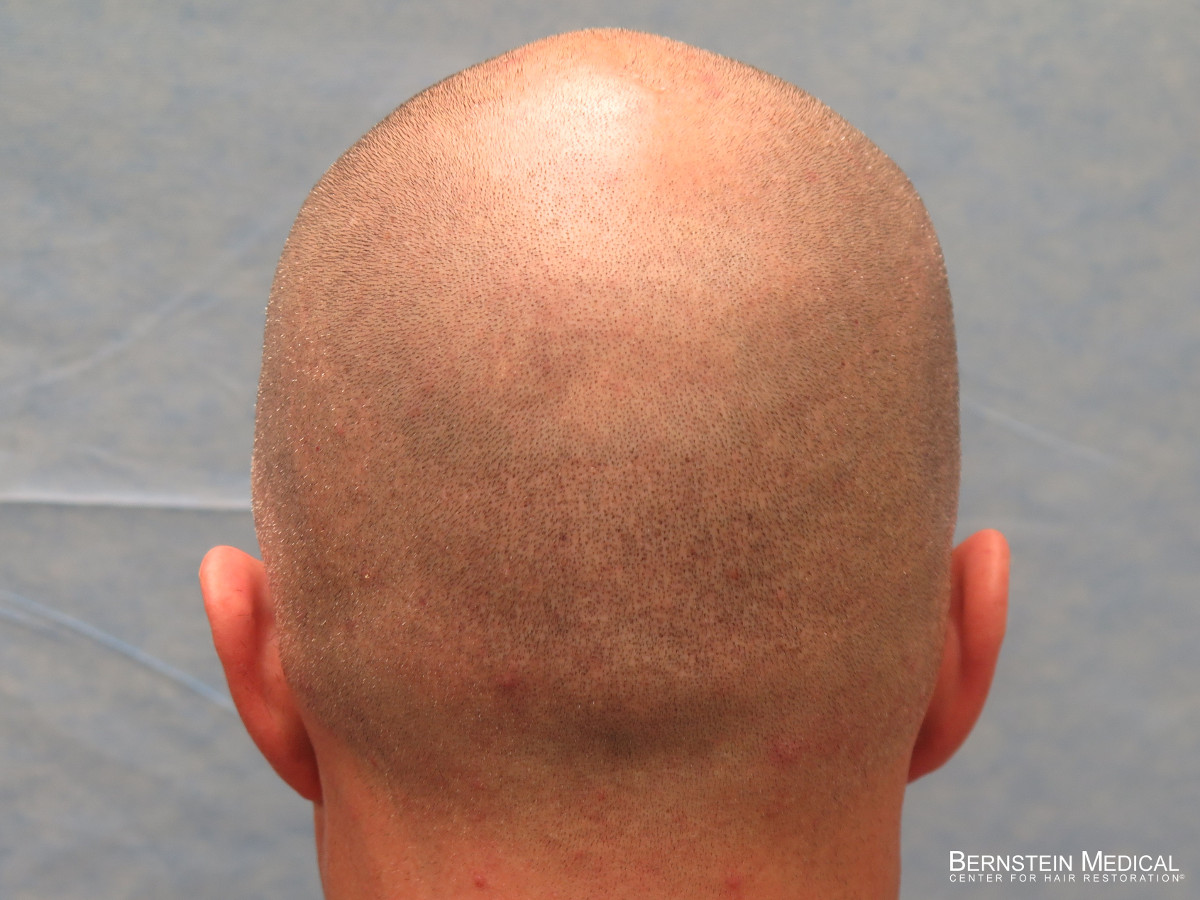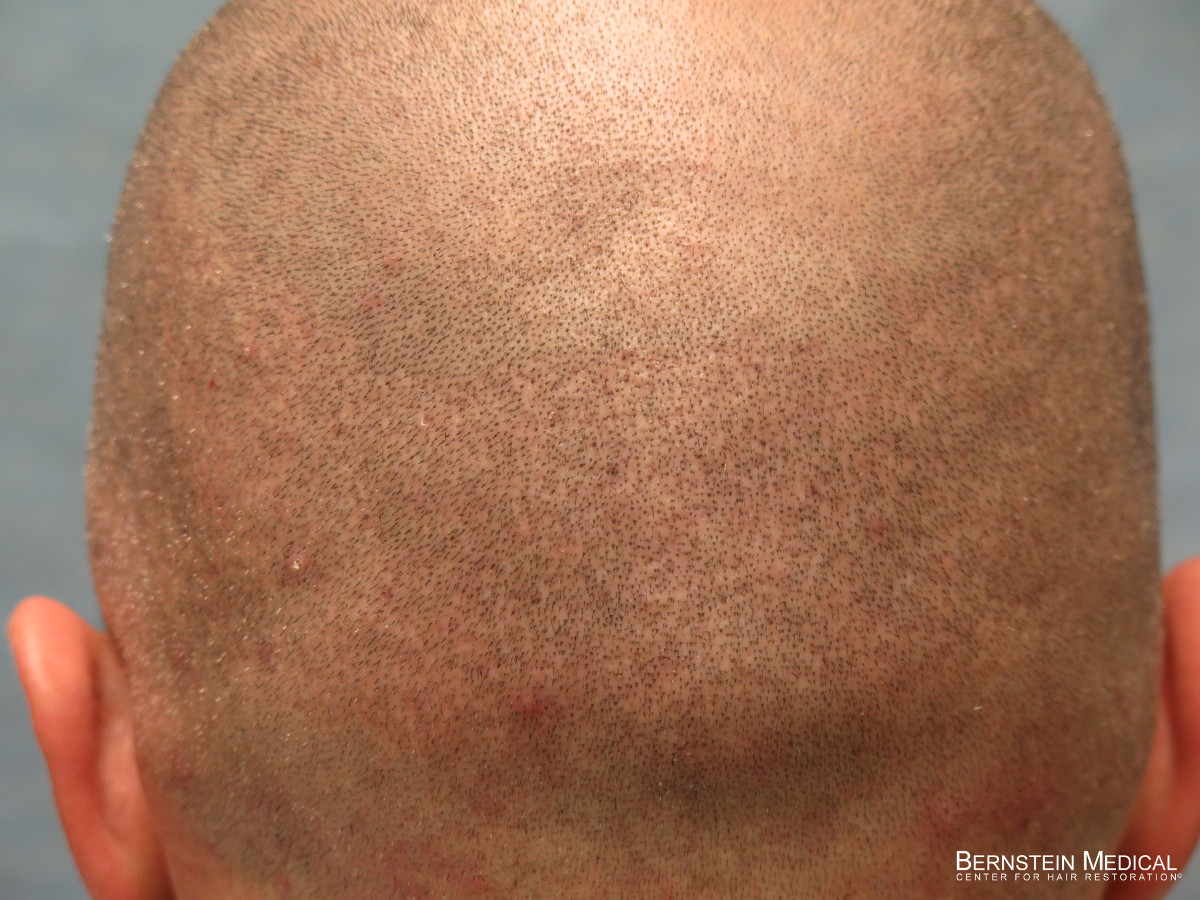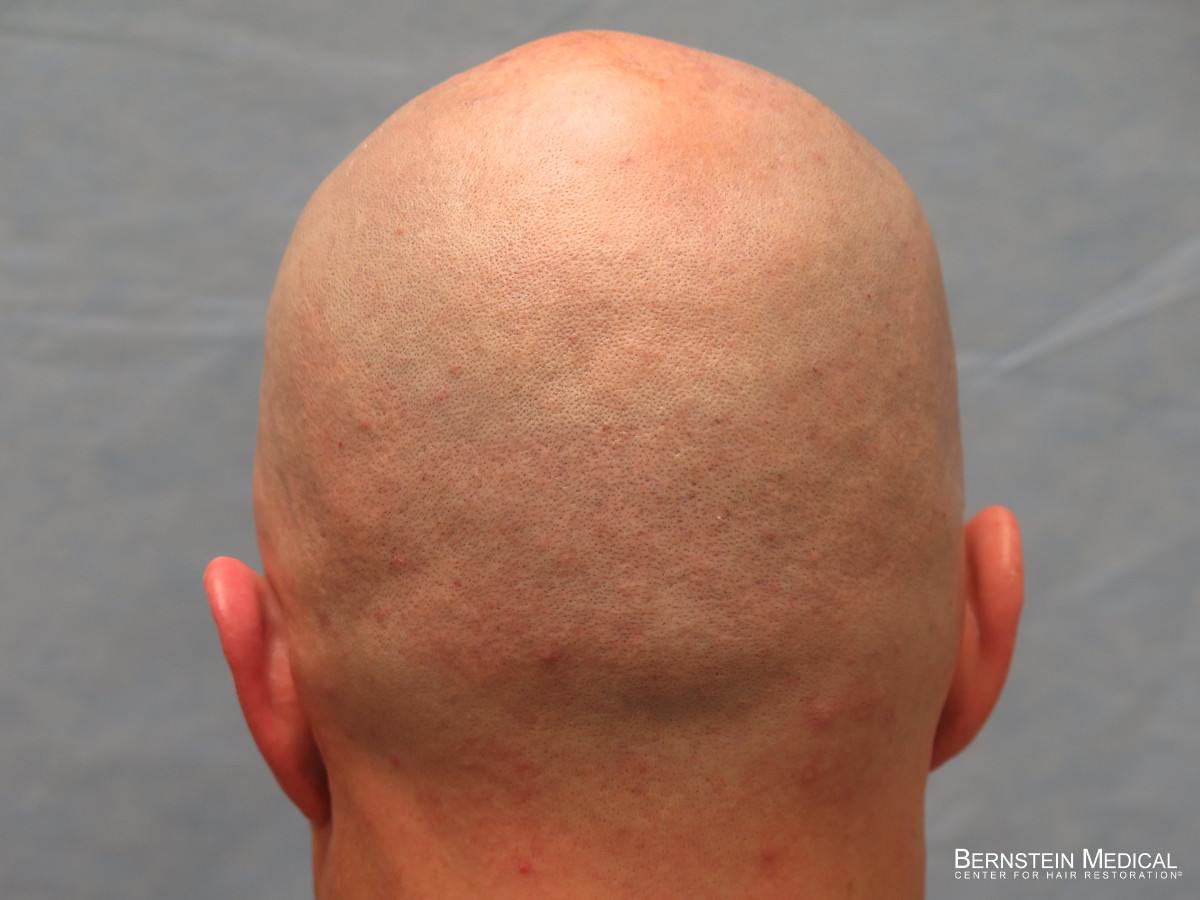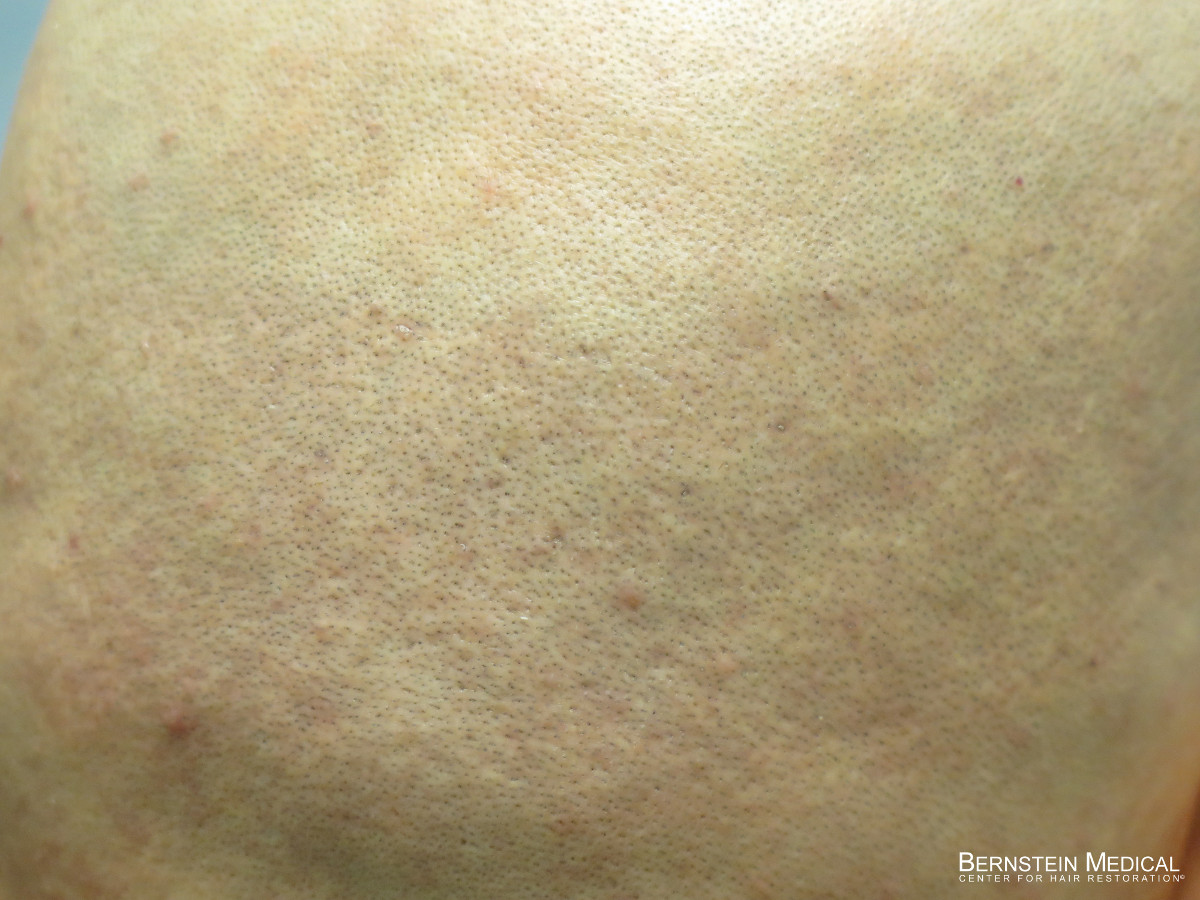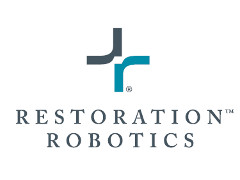
Restoration Robotics, the company that developed the ARTAS® Robotic Hair Transplant system, has published a white paper case study on how Dr. Bernstein utilizes the robotic system’s tools to minimize scarring after Robotic FUE.
The paper describes how a Bernstein Medical patient — a 45 year old man with Norwood Class 5A male pattern baldness — had 2,540 follicular units harvested with the ARTAS robot, generating a total of 2,768 grafts. Some of the tools and techniques that Dr. Bernstein employed include:
- Small 19g dissecting needle — the small needle leaves a smaller wound that heals more rapidly than previous needles.
- Software programmed to avoid 1-hair follicular units — the extraction of follicular units with more than one hair maximizes the number of hair follicles per graft and reduces the number of donor wounds that need to be made.
- Minimum distance between harvest sites — by increasing the distance between harvested follicular units (from 1.7mm to 2.0mm), Dr. Bernstein enabled “feathering” between harvested and non-harvested zones. This blending of harvest zones into non-harvested zones makes the harvested area less noticeable.
In the third month after his Robotic FUE hair transplant surgery, the patient’s donor area was reviewed for scarring with hair shaved at four different lengths.
See images of the patient’s donor area below:
The case study illustrated that the ARTAS Robotic Hair Transplant system’s suite of tools can minimize the detectability of scars after an FUE hair transplant.
Dr. Bernstein describes advanced Robotic FUE techniques used at Bernstein Medical (VIDEO)
Read about Robotic Hair Transplantation


